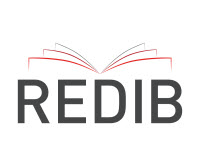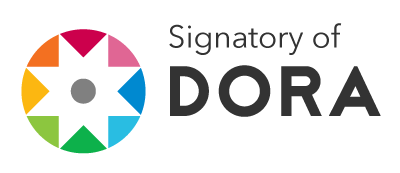Investigación en comportamiento informativo en Japón
Resumen
Objetivo: La investigación del comportamiento de la información en Japón ha evolucionado en varias formas desde principios de la década de 1990. Para comprender los cambios y logros de la investigación del comportamiento de la información en los últimos 30 años en Japón, se realizó una revisión de la literatura. También se revisó la investigación del comportamiento de la información relacionada con la salud, como un tema destacado.
Métodos: la literatura candidata se identificó a partir de búsquedas en bases de datos y otras fuentes. A partir de 1153 artículos identificados, de 163 candidatos, se seleccionaron 67 muestras de literatura final de acuerdo con ciertos criterios.
Resultados: En la primera mitad de este artículo, revisamos la evolución de la investigación del comportamiento de la información en los últimos 30 años. Si bien la investigación teórica en el comportamiento de la información se ha realizado de manera continua desde principios de la década de 1990 hasta el presente, la investigación en la práctica social ha recibido un interés significativo en los últimos años. Desde el punto de vista de los objetivos de la investigación, la investigación en Japón se puede clasificar en dos tipos, es decir, búsqueda de información y uso de los medios. En la segunda mitad de este documento, presentamos estudios sobre el comportamiento de información relacionada con la salud por parte de los ciudadanos. En las primeras etapas, se realizaron ampliamente encuestas de investigación sobre el comportamiento de la información de salud dirigidas a una amplia gama de personas. Posteriormente, aumentaron gradualmente los estudios que investigan los factores que afectan el comportamiento de la información de salud, como la alfabetización en salud y el efecto de la información de salud. Además, temas específicos, como el cáncer, el COVID-19 y los problemas de las personas mayores, han atraído una atención cada vez mayor.
Conclusión: se espera que la investigación del comportamiento de la información en Japón se desarrolle aún más para centrarse en contextos y entornos de información específicos.
Descargas
Citas
Akasawa, M. & Ueda, S. (1998). Academic economists’ use of electronic media. Library and Information Science, 40, 1–27. https://doi.org/10.46895/lis.40.1
Asai, D., Sagata, Y., & Asano, Y. (2013). On-site information-seeking behaviors in earthquakes and tsunamis. Conference on Human Factors in Computing Systems, Proceedings, 1881–1886. https://doi.org/10.1145/2468356.2468693
Awamura, N. (2006). Rethinking the information behavior model of information encounters: An analysis of interviews on information encounters on the Web. Library and Information Science, 55, 47-69. https://doi.org/10.46895/lis.55.47
Awamura, N. (2009). Implications of Chatman’s viewpoint for user studies. Library and Information Science, 62, 29-80. https://doi.org/10.46895/lis.62.29
Case, D. O., & Given, L. M. (2016). Looking for Information: A Survey of Research on Information Seeking, Needs, and Behavior (4th ed.), Emerald.
Funaki, T. & Iwakuma, M. (2020). Process and factors of Internet health information seeking. Qualitative study of parents of preschoolers. Journal of the Japan Academy for Health Behavioural Science, 35(1), 63–71.
Hamano, H., Inagaki, M., Tasaki, K., Matsui, K. &Horiguchi, T. (2020). Process of using health information by elderly patients undergoing hemodialysis. Journal of Japan Society of Nursing Research, 43(2), 245–253. https://doi.org/10.15065/jjsnr.20200131083
Hara, H., Maeno, M., Kataoka, H., Iwasaki, K., Enomoto, N. (2021). Examination of means of information provision for free health consultation and medical examination for foreigners during the Covid-19 epidemic situation in Shizuoka Prefecture. Tokai Koshu Eisei Zasshi 9(1), 98–103. https://doi.org/10.24802/tpha.9.1_98
Harada, K., Shibata, A., Lee, E., Oka, K., Nakamura, Y. (2016). Sources of strength-training information and strength-training behavior among older Japanese adults. Health Promotion International, 31(1), 5–12. https://doi.org/10.1093/heapro/dau052
Hashimoto, Y., Katagiri, K., Kimura, T., Korenaga, R., Tsuji, D., Mori, Y., Ogasawara, M., Kitamura, S., Kawai, D., & Ono, S. (2020). Information behavior of middle-aged and elderly people. Research Survey Reports in Information Studies. Interfaculty Initiative in Information Studies, the University of Tokyo, 36, 264-319. https://doi.org/10.15083/00079076
Hashizume, K., Goto, H., & Yamamoto, A. (2019). Advantages and difficulties of using information from the Internet for patients with breast cancer. Health Science Research, 32, 75–85.
Ikeya, N. (2001). Information in the world of life Tamura, S. (eds.) Information Seeking and Use, 1-39, 189-227, Keiso Shobo. [in Japanese]
Imazu, M., Nakayama, S. & Joho, H. (2011). Effect of explicit roles on collaborative search in travel-planning tasks. Notes in Computer Science (including subseries Lecture Notes in Artificial Intelligence and Lecture Notes in Bioinformatics) Vol. 7097 LNCS. https://doi.org/10.1007/978-3-642-25631-8_19
Ishibashi, M., Yasumoto, S., Iwasaki, M., Ishiakawa, T., Waragai, S. & Sekiya, N. (2021). Relationship between anxiety and COVID-19 and information behavior. Saigai Joho, 19 (1), 73-83. https://doi.org/10.24709/jasdis.19.1_73
Itoga, M. (1991). Meaning and understanding in human information uses: A critical study of information needs based on the sense-making concept. Library and Information Science, 29, 1-29. https://doi.org/10.46895/lis.29.1
Itoga, M.(1992). Seeking Understanding beneath the Unspecifiable: an Alternative Framework for Mapping Information Needs in Communication. Libri, 42(4), 330–344. https://doi.org/10.1515/libr.1992.42.4.330
Iwase, A. (2021). University students’ understanding of information media in learning: A focus on the decision-making for selection. Library and Information Science. 85, 1-22. https://doi.org/10.46895/lis.85.1
Japan Medical Library Association Working Group (2002). Demand survey for health and medical information among citizens. Research report for the development and provision of the EBM database in Japan. Heisei 13, 7–15. https://mhlw-grants.niph.go.jp/project/5555 [in Japanese]
Kinjo, H., Ishii, K., Saito, T., Nomura, N., & Hamada, A. (2017). A survey on how older adults access medical and health information and the types of problems they face in accessing it. Japanese Journal of Gerontology, 39(1), 7–20. https://doi.org/10.34393/rousha.39.1_7
Kobayashi, R., & Ishizaki, M. (2019). Examining the interaction between seeking medical information online and understanding: Exploratory study. JMIR Cancer, 5(2). https://doi.org/10.2196/13240
Kunimoto, C. (2010). How people initiate information-seeking behavior: Case studies of seeking medical information. Library and Information Science, 64, 55-79. https://doi.org/10.46895/lis.64.55
Kurata, K., Matsubayashi, M., Mine, S., Muranushi, T., & Ueda, S. (2007). Electronic journals and their unbundled functions in scholarly communication: Views and utilization by scientific, technological, and medical researchers in Japan. Information Processing and Management, 43(5), 1402-1415. https://doi.org/10.1016/j.ipm.2006.01.006
Kurata K., Mine, S., Morioka T., Sakai, Y., Kato, S., & Ueda, S. (2009). Reading and information seeking behavior of Japanese medical researchers in the era of electronic journals and open access. Library and Information Science, 61, 59-90. https://doi.org/10.46895/lis.61.59
Kurata, K., Takashima, Y., Matsubayashi, M., Matsui, M. & Muranushi, T. (1998). Research activity and electronic media use in networked situations: A survey of psychological faculty at Japanese universities. Annals of the Japan Society of Library Science, 44(4), 143-158. https://doi.org/10.20651/ajsls.44.4_143
Lee, J. (2021). Responses to media coverage of the COVID-19 pandemic and information behavior in the Japanese context. SEARCH Journal of Media and Communication Research, 13(1), 111–126.
Matsubayashi, M. (1995). The significance of Brenda Dervin’s ‘sense-making’ approach and its application to user studies. Library and Information Science, 34, 1-16. https://doi.org/10.46895/lis.34.1
Matsubayashi, M., & Freund, L. (2019). A comparative study of online news use by young adults in Canada and Japan. Proceedings of the Association for Information Science and Technology, 56(1), 730–732. https://doi.org/10.1002/pra2.152
Matsubayashi, M., Toshimori, A. & Kurata, K. (2012). Need and search for specialized information in the scientific, technical, and medical fields by the general public in Japan after the Great East Japan Earthquake. Proceedings of the Information Behavior Conference: Information Seeking in Context, 2012 (Tokyo).
Matsubayashi, M., Toshimori, A. & Nagata, H. (2009). Survey of Life Science Researchers with Institutions/Companies in Japan on Their Use of Electronic Resources. Journal of the Japan Society for Library and Information Science, 55(3), 141-154. https://doi.org/10.20651/jslis.55.3_141
Minami et al., (2016). Information Retrieval Skills in a Web Environment. Journal of the Japan Society for Library and Information Science, 62(3), 163-180. https://doi.org/10.20651/jslis.62.3_163
Miwa, M. (2000). Use of human intermediation in information problem-solving: A user’s perspective. Syracuse University ProQuest Dissertations Publishing. 9977391.
Miwa, M. (2001). User Situations and Multiple Levels of user goals in the information problem-solving processes of AskERIC users. Proceedings of the ASIST Annual Meeting, 38, 355-71.
Miwa, M. (2015). Re-thinking of information behavior grammar model. In Ikeya, N., Agata, M., Suga, C. (eds.) The library connects people, books, and information, 149-159. KeisoShobo. [in Japanese]
Miwa, M. (2021). Capturing changing user goals in the information-seeking process using the information behavioral grammar model. Libres, 31(1), 1–11. https://doi.org/10.32655/LIBRES.2021.1.1
Miwa, M., & Takahashi, H. (2008). Knowledge acquisition and modification during students' exploratory Web search processes for career planning. Information Research 13(4): 376. http://InformationR.net/ir/13-4/paper376.html
Nagai, S. & Tomioka, A. (2022). Information needs of adolescents with cancer who return to social life. AYA ga no iryo to shien, 2(1), 8–15. https://doi.org/10.34598/ayaoncology.2.1_8
Nagano, G. & Joho, H. (2020). Modelling Tsunami Evacuation Process Focusing on Information-Seeking Behavior. Journal of Information and Media Studies, 19(1), 29-46. https://doi.org/10.11304/jims.19.29
Nakashima, M., Kuroki, S., Shinkoda, H., Suetsugu, Y., Shimada, K. & Kaku, T. (2012). Information-seeking experiences and decision-making roles of Japanese women with breast cancer. Fukuoka IgakuZasshi=Hukuoka Acta Medica 103(6), 120–130. https://doi.org/10.15017/23480
Nakayama et al., (2015). Comprehensive health literacy in Japan is lower than that in Europe, which is a validated Japanese-language assessment of health literacy. BMC Public Health, 15, 505. https://doi.org/10.1186/s12889-015-1835-x
Nakayama, K., Yonekura, Y., Danya, H. & Hagiwara, K. (2022). COVID-19 Preventive Behaviors and Health Literacy, Information Evaluation, and Decision-making Skills in Japanese Adults: Cross-sectional Survey Study. JMIR Formative Research, 6(1). https://doi.org/10.2196/34966
Oshima, S., Kisa, K., Terashita, T., Kawabata, H. &Maezawa, M. (2013). Care-seeking behavior of Japanese gynecological cancer survivors with adverse effects. BMC Women’s Health, 13(1). https://doi.org/10.1186/1472-6874-13-1
Rahmi, R., Joho, H. & Shirai, T. (2019). Analysis of natural disaster-related information-seeking behavior using temporal stages. Journal of the Association for Information Science and Technology, 70(7), 715–728. https://doi.org/10.1002/asi.24155
Saito, H., Takaku, M., Egusa, Y., Terai, H., Miwa, M. & Kando, N. (2011). Connecting Qualitative and Quantitative Analysis of Web Search Process: Analysis Using Search Units. In: Cheng, P.-J., Kan, M.-Y., Lam, W., Nakov, P. (eds.) AIRS 2010. LNCS, vol. 6458, pp. 173–182. Springer and Heidelberg (2010)
Sakai, S., Awamura, N. &Ikeya, N. (2012). The practical management of information in a task management meeting: taking 'practice' seriously. Information Research, 17(4) paper 537. http://InformationR.net/ir/17-4/paper537.html
Sakai, S., Ikeya, N., &Awamura, N. (2017). Information behavior as work: practical information management at the meeting. Mizukawa, Y., Akiya, N. & Igarashi, M. Workplace studies – Ethnomethodology of working, 121-138. Harvest-sha. [in Japanese]
Sakai, Y. &Kadoya, H. (2000). Do Electronic media change research activities? Media use trends in the Medical Field, 59-97. KeisoShobo. [in Japanese]
Sakai, Y., Kunimoto, C. &Kurata, K. (2012). Health information seekers in Japan: A snapshot of needs, behavior, and recognition in 2008. Journal of the Medical Library Association, 100(3), 205–213. https://doi.org/10.3163/1536-5050.100.3.011
Sakai, Y., Kunioto, C., &Kurata, K. (2015). Health information-seeking behavior in Japan: Results of the 2008–2013 survey. Journal of the Japan Society of Library and Information Science,61, 82–95. https://cir.nii.ac.jp/crid/1010282257260308616.bib?lang=ja
Shiga et al. (2017). Modelling information needs in collaborative search conversations. Proceedings of the 40th International ACM SIGIR Conference on Research and Development in Information Retrieval (SIGIR 2017), 715-724. SIGIR 2017 (Tokyo, Japan, 07/08/2017 - 11/08/2017) DOI: https://doi.org/10.1145/3077136.3080787
Shimada, H., Kawakami, K., Okamoto, M. & Nozaki, M. (2021). Health literacy and related factors among elderly people in urban Japan. Iryo Kango Kenkyu 18(1): 63–74.
Shishido, N. (1997). Information-seeking behavior of OPAC users in university libraries: An interview study with students. Library and Information Science, 37, 35-54. DOI: https://doi.org/10.46895/lis.37.35
Sugie, N. (2011). Information-seeking behavior of public library users: Generating concepts and a theory based on a qualitative analysis of interview data. Journal of the Japan Society for Library and Information Science, 57(1). 1-18. https://doi.org/10.20651/jslis.57.1_1
Sugie, N. (2017). Classifying library users’ behavior through analysis of location information acquired using radio-frequency identification technology. Journal of the Japan Society for Library and Information Science, 63(2), 71-89. https://doi.org/10.20651/jslis.63.2_71
Taguchi, A., Murayama, H., Ryu, S., Nagata, S. &Murashima, S. (2011). Characterizing active acquirers and communicators of health information for health promotion interventions in the community. MinzokuEisei, 77(4), 150–161. https://doi.org/10.3861/jshhe.77.150
Takahashi, T., Yamaki, C. & Takayam, T. (2020). Availability and importance of cancer information. Adolescent and young adult patients. Journal of the Japanese Association of Health Communication, 11(2), 37–43.
Takahashi, Y., Ohura, T., Ishizaki, T., Okamoto, S., Miki, K., Naito, M., Akamatsu, R., Sugimori, H., Yoshiike, N., Miyaki, K., Shimbo, T., & Nakayama, T. (2011). Internet use for health-related information via personal computers and cell phones in Japan: A cross-sectional, population-based survey. Journal of Medical Internet Research, 13(4). https://doi.org/10.2196/jmir.1796
Takaku, M., Ichikawa, S. & Kaneko, N. (2015). Health literacy and related factors among the elderly in urban Japan. Nihon KoshuEiseiZasshi 62(11): 684–693. https://doi.org/10.11236/jph.62.11_684
Takayama, T. &Yamaki, C. (2016). Identifying an effective health information delivery system based on public health information-seeking behaviors. Hoken Iryo Shaigaku Ronshu, 27(1): 39–50. https://doi.org/10.18918/jshms.27.1_39
Takeda M. (2017). Use of Curated Information: Based on Electroencephalogram Analysis. Journal of the Japan Society for Library and Information Science, 63(4), 196-210. https://doi.org/10.20651/jslis.63.4_196
Takeda M. (2019). A study on the use of curated information: An analysis of endogenous eyeblinks. Journal of the Japan Society for Library and Information Science, 65(2), 67-83. https://doi.org/10.20651/jslis.65.2_67
Tamura, S. (2001). Research on Information Use (Chapter 1). & Social Significance of Information Use (Chapter 4). Tamura, S. (eds.) Information Seeking and Use, 1-39, 189-227, Keiso Shobo. [in Japanese]
Terai H. (2011). Information Seeking Process in Hybrid Information Environment. Journal of the Japan Society for Library and Information Science, 57(2), 43-62. https://doi.org/10.20651/jslis.57.2_43
Terai, H., Takaku, M., Saito, H., Miwa, M., Egusa, Y. &Kando, N. (2008). Differences between informational and transactional tasks in information seeking on the web. IIiX’08: Proceedings of the 2nd International Symposium on Information Interaction in Context, 152–159. https://doi.org/10.1145/1414694.1414728
Tsuchiya, M., Masujima, M., Mori, M., Takahashi, M., Kato, T., Ikeda, S. I., Shimizu, C., Kinoshita, T., Shiino, S., & Suzuki, M. (2018). Information-seeking, information sources and ongoing support needs after discharge to prevent cancer-related lymphoedema. Japanese Journal of Clinical Oncology, 48(11), 974–981. https://doi.org/10.1093/jjco/hyy127
Uda, N., Mizoue, C., Donkai, S., & Ishimura, S. (2018). Information seeking behavior of older adults in a Public Library in Japan. Libres, 28(1), 1–12. https://doi.org/10.32655/LIBRES.2018.1.1
Watanabe, M., Goto, H., & Nakayama, S. (2021). Information-seeking behaviour factors related to consent for treatment decisions in parents of children with cancer. Journal of Information and Media Studies, 1–18. https://doi.org/10.11304/jims.20.1
Yamaguchi, N., Abe, S., Eguchi, A., Kawai, F., Suwabe, N., Tsuchida, R., et al. (2001). Demand survey of patients and families. Project Report of Welfare Science Research Grants Medical Technology Evaluation Comprehensive Research.Heisei 12, 19–35. [in Japanese]
Yamamoto, T., Yamamoto, Y., & Fujita, S. (2018). Exploring people’s attitudes and behaviors toward careful information seeking in web search. International Conference on Information and Knowledge Management, Proceedings, 963–972. https://doi.org/10.1145/3269206.3271799B
* [in Japanese] indicates literature in Japanese other than articles. Most Japanese articles have English abstracts.
Derechos de autor 2023 Mamiko Matsubayashi, Yukiko Sakai

Esta obra está bajo licencia internacional Creative Commons Reconocimiento 4.0.







.jpg)




















